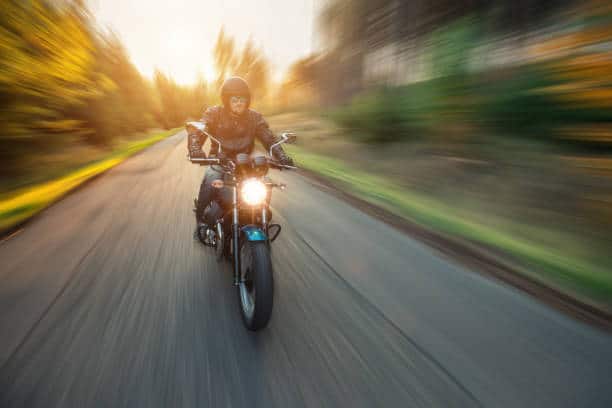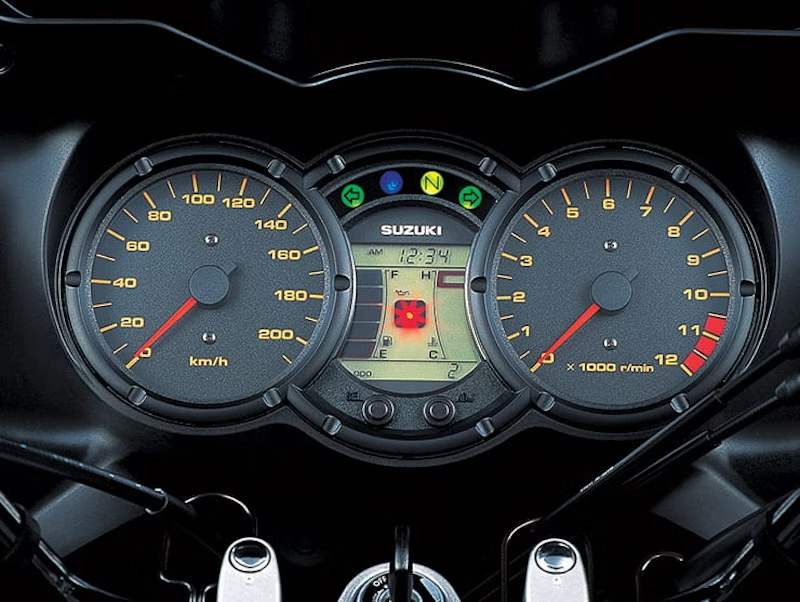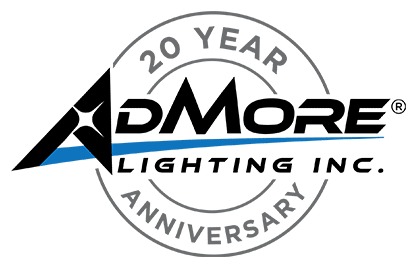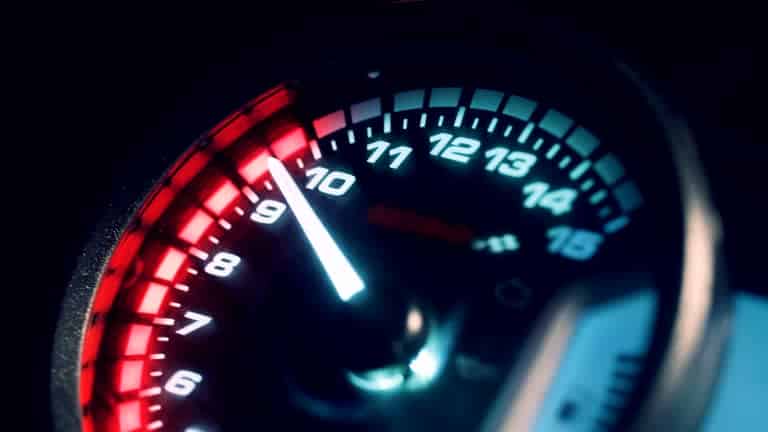Discovering the Fun Zone
I rode like a typical Canadian—too damn polite to my bike. I babied it, not realizing the machine between my legs actually liked to be ridden hard, with a little bit of attitude.
Don’t get me wrong. I was riding well and my bike was performing as it should—just not as well as it could.
When I came back to riding in 2017 after a long hiatus, I had to re-learn the basics. Contrary to the oft-repeated phrase, “It’s just like riding a bicycle,” it’s not. I had to re-learn the fundamentals: basic motorcycle operation—shifting, braking, clutch-throttle control; putting the bike exactly where I wanted it; road strategy and positioning from a motorcyclist’s perspective; emergency maneuvers; and advanced, though not racetrack-level, cornering skills. That sort of thing.
I took an advanced course to restart my motorcycling journey. When I finished, I was in that dangerous learning phase where I’d learned just enough to think I was getting good—and not enough to realize I wasn’t. In many cases, despite specific instruction, I didn’t fully absorb the lessons because they could only be gleaned from lots of riding experience. These skills would click in later, after months on the road.
One example is about following the regularly hollered instruction to look where I wanted to go. I was positive I was doing this. For a 90° right turn, I would’ve sworn I was looking all the way to the right—at quarter past the hour—when in reality I was only looking to about five after. It wasn’t until months after the course that one day I actually looked at quarter past to make a 90º right turn and my bike whipped around like it suddenly had a magic elastic attached. The coin dropped. Dang! That’s what they meant. Suddenly cornering, u-turns, figure eights, all became easier.
Over time other skills improved too. I cornered better. My slow riding improved. My clutch-throttle control got even better. And, as I got a little more confident and aggressive, I started to demand a little more from my motorcycle.
Despite all of the books I had read and the courses I had taken, nothing talked about where to ride in the power band to get the most out of my bike. I hadn’t been lugging my bike, but I had been staying at the lower end of the power band. It was time to learn how to get the most from my bike. Between my manual and some online digging, I found out where my bike really comes alive—and started experimenting using a combination of this guide and the sound of the engine.
I’m no mechanic (so E&OE), but here’s what I’ve learned about riding higher in the power band and why it is better for my engine—in plain English.

What the heck is the power band?
The power band for a motorcycle is the rpm range where the engine produces its strongest, most efficient power. Ride below it and your bike can feel sluggish. I already noted that I was riding in the lower range of the power band, but not lugging my bike. Let’s look at the distinction without getting too technical.
Riding in the lower end of the power band is safe.
Riding in the lower end of the power band is safe because it’s still within the engine’s normal operating range—for my V-Strom it’s around 3,000–4,000 rpm. Although I am not getting peak performance—the engine feels a bit lazier and the throttle response is a little softer—it’s smooth and steady. It is perfectly fine for cruising, steady highway riding, or when I’m just relaxing and not asking much from my bike. It is slightly less efficient performance-wise, but not harmful at all.
Riding below the power band—lugging—is bad for the engine
You know you’re below the power band, often under 2,500 rpm (it varies by bike), when you open the throttle expecting acceleration and what you get is hesitation, vibration, and a feeling that your engine is gasping for its last breath. You might hear a chugging or knocking sound. What is happening is that combustion pressure is peaking too soon and stressing bearings and connecting rods. Occasional lugging isn’t catastrophic, but repeated or prolonged lugging under load—climbing hills, accelerating, or carrying a passenger—can shorten engine life.
What about riding above the ideal power band?
Riding slightly above the ideal range is no big deal for most bikes. If your engine’s sweet spot is, say, 4,000–7,000 rpm, running up into 7,500–8,000 during acceleration is totally fine—that’s just the upper edge of usable power. The engine feels lively, throttle response is crisp, and you’re getting the best performance. You’ll burn more fuel and create more engine heat, but modern bikes (like my V-Strom) are built to handle this. Riding above the ideal power band is okay for short bursts and spirited riding—you just shouldn’t live there all the time.

Riding at consistently high rpm—the borderline zone
If I was riding long stretches near redline (8,500–9,000 rpm on my V-Strom), I’d be stressing components more because:
- Piston speed and valve spring compression increase dramatically.
- Oil temperature and consumption rise.
- It may accelerate valve-train wear and shorten oil life.
You’ll know you are there because you’ll feel it—the engine buzzes, and vibration creeps up. Riding at sustained high rpm causes more wear and tear and outweighs the benefit.
Redline and beyond—don’t go there!
The rev limiter is your friend—it’s there to stop you before you hurt the engine.
Over-revving (especially from a missed downshift) can cause:
- Valve float (valves don’t close in time, risk of piston contact)
- Rod bearing stress or failure
- Timing chain/tensioner wear
Riding at red line and beyond is mechanically abusive to your bike and potentially catastrophic if repeated.
Is the power band the same in all gears?
For my V-Strom, the sweet spot shown in most references is a general range and doesn’t really change. What does change is the usable power band; it effectively shifts a little by gear because of how gearing multiplies torque and load.
Let’s break down why and what that means using my V-Strom as an example. My engine always makes its torque and power at the same rpm—e.g., around 6400 rpm for peak torque and 8800 rpm for peak horsepower. What changes by gear is how much load the engine feels and how much rpm I need to stay in the “fun zone.” In low gears, there’s a lot of torque multiplication—the bike doesn’t need high rpm to move smartly. In higher gears, torque is spread thinner, so I need more revs to get the same pull. So, the “optimal riding range” shifts slightly upward as I move through the gears.
Typical gear-by-gear feel (approximate ranges for my V-Strom DL650 based on peak output around 66–68 hp @ ~8,800–9,200 rpm and ~59–60 N·m @ ~6,400–6,600 rpm
| Gear | Casual riding (rpm) | Spirited riding (rpm) “The fun zone” | Notes |
| 1st | 3,000–4,500 | 4,500–6,500 | Short gear; plenty of pull early. Shift before it screams. |
| 2nd | 3,500–5,000 | 5,000–6,800 | Great for slow twisties or city bursts. |
| 3rd | 4,000–5,500 | 5,500–7,200 | Feels alive here—perfect for backroads. |
| 4th | 4,200–5,800 | 5,800–7,500 | Broad sweet spot for most spirited riding. |
| 5th | 4,200–6,000 | 6,200–7,500 | Great for passing or highway roll-ons. |
| 6th | 3,800–5,800 | 6,000–7,200 | Cruising gear; relaxed but still responsive. |
NOTE: EVERY BIKE MODEL IS DIFFERENT SO YOU NEED TO FIND OUT WHAT THE OPTIMAL POWER BAND IS FOR YOUR BIKE
What the heck does all this mean?
My engine’s happy zone (4,000–7,000) stays roughly the same, but how much I use it depends on the situation. Lower gears are short-shifted because they spin up faster and don’t need full rpm to make torque. But, in 3rd through 6th, I let it rev higher, especially when I want that lively throttle feel or need passing power.
The engine’s power band doesn’t move—but how it is used does, depending on load, gear, and purpose. The chart above (for my V-Strom DL650) shows how the rpms for “spirited riding” creep a bit higher in each gear.
Seven reasons why higher rpm operation is better mechanically for your bike
1. Optimum efficiency zone
- Every engine has a torque sweet spot. For my Suzuki V-Strom DL650 it is roughly 4,000–7,000 rpm.
- Operating in that sweet spot maintains full oil pressure and consistent combustion.
- It distributes forces evenly and keeps temps stable.
2. Burns cleaner
- Low rpm + light throttle → rich mixture → soot on valves/pistons.
- Higher rpm raises combustion temp → burns off carbon (“Italian tune-up”).
- Results: cleaner plugs, valves, exhaust, smoother idle.
3. Lubrication & cooling
- Oil pump volume rises with rpm → better film strength at bearings/cams.
- For air/oil-cooled bikes, faster rotation = more heat transfer.
4. Transmission & clutch life
- Low rpm torque pulses = jerky load on chain, gear dogs, clutch plates.
- Midrange rpm evens pulses → smoother driveline engagement, longer life.
5. Engine balance
- Engines balanced for normal operating rpm, not idle.
- Below design speed, reciprocating/rotating forces don’t cancel → more vibration.
- Within design rpm, they harmonize → smoother feel.
6. Airflow & volumetric efficiency
- At moderate-high rpm, intake air speed and exhaust scavenging increase.
- Cylinders fill more completely → higher torque, quicker throttle response.
- Mechanically, valves open/close at the frequency that optimizes gas flow.
7. Modern designs expect it
- EFI and tighter tolerances let engines run at midrange for hours safely.
- Liquid-cooled or hybrid-cooled systems handle sustained 5,000–7,000 rpm easily.
- Running at those speeds is normal use, not abuse.
The fun zone
No, I wasn’t lugging my bike, but I wasn’t getting everything out of it either. Despite everything I had read, I didn’t know that my bike performs better when it is ridden harder. The performance and feel of my bike: the throttle response—instant and linear, its acceleration—predictable and lively, and its handling—smoother roll-on and balanced corner exits all make me feel like I am riding a sportier bike. It has revitalized my riding and made riding my old V-Strom a whole new experience, just by continuing to learn and grow as a rider. Now, how cool is that?
The only down side?
My fuel economy has gone down and I have to continually be careful because when I’m having so much fun it is easy to lose track of how fast I’m going. So far, POLICE: 0. I hope to keep it that way. But, although my gas mileage may have dropped 5–10 per cent, my enjoyment has increased 1,000 per cent. Not a bad trade off. So, get out there and ride in your fun zone. If you aren’t already, you’ll find it’ll put a whole new stride in your ride.
Ride safe and be seen. I hope to see you out on the road sometime soon. Remember, becoming a skilled and confident rider is a marathon, not a sprint. Take it slow, enjoy the ride, and never stop learning. As I’ve discovered, motorcycling is a lifestyle and a lifelong adventure.
– John Lewis

John is a passionate moto-traveller and motorcycle enthusiast who enjoys sharing stories that inform, inspire, and entertain. Specialising in motorcycle touring, safety, travel, or just about anything motorcycle-related, John’s insights, travels, and experiences have been featured in national magazines such as Motorcycle Mojo and The Motorcycle Times, as well as on various blogs and websites. When he is not riding or writing, he works as the service manager at a boutique motorcycle shop where he’s always ready to share a story or helpful tip.

